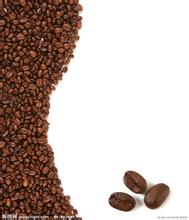Introduction to the Flavor description Price of Tanzania's Fine Coffee beans
The national average annual output of wheat is 70, 000 tons, and the largest wheat production unit is the HANNANG wheat complex, which is composed of several farms with a total planting area of 4000 hectares. These farms are located in the Hannang district of Arusha and are all autonomous subsidiaries of NAFCO. In the 1970s, NAFCO developed and operated these farms with the help of the Canadian International Development Agency (CIDA), and CIDA's assistance to NAFCO ended in 1993. In addition to these farms in NAFCO, a number of large private farms in Arusha, Iringa and Kilimanjaro provinces also produce rice. In addition, some small farmers also produce wheat as rations.
Sugarcane is mainly grown by four large plantation companies, namely Kilombero Sugarcane Company, Mtibwa Sugarcane Plantation, Tanganyika planting Company and Kagera Sugarcane Co., Ltd. In addition, there are some foreign investors growing sugar cane in Kilombero and Mtibwa. The annual output of sugar in China is about 115000 tons, while the annual demand is 300000 tons, and more than 200,000 tons need to be imported every year.

Coffee exports from Tanzania (Tanzania) play an important role in the whole national economy.
In the past, the coffee industry in Tanzania has been dominated by manor cultivation, but now more than 85% are grown by small farmers. Many small farmers form cooperative organizations, the most important of which is the Kilimanjaro Cooperative Alliance (KilimanjaroCooperativeUnion, referred to as KNCU). Tanzanian coffee is sold by the Tanzanian Coffee Management Council (TanzanianCoffeeMarketingBoard, TCMB) to private exporters by auction. In the 1980s, most coffee sales in Tanzania shifted from auctions to coffee-shaped berries sold directly to the Tanzania Coffee Management Committee. Generally speaking, coffee beans in Tanzania have extraordinary quality. For example, the high-quality Tanzanian AA coffee (ChaggaAA), produced in the Moshi area near Mount Kilimanjaro, is famous for its full-grained and fragrant quality. Due to political instability and rampant diseases and insect pests, the Tanzanian coffee industry has been damaged, resulting in a decline in the overall level of coffee and instability in quality, which in turn lead to lower prices. The result of lower prices is usually a further decline in the coffee industry. More notably, it is estimated that more than 12 per cent of Arabica coffee grown in northern Tanzania from 1969-1985 was smuggled into Kenya. Recently, however, the country's coffee industry has shown signs of improving. Although the process of improvement is slow, it is still encouraging because the quality of coffee in Tanzania is excellent. Coffee is one of the main cash crops in Tanzania. Tanzania ranks fourth in export crops after cotton, tobacco and cashew nuts, mainly sold to Italy, Japan and the United States, and coffee exports play an important role in the Tanzanian national economy. Tanzania's main coffee-producing area, located at the foot of Mount Kilimanjaro, is rich in volcanic soil. Some coffee trees are more than 100 years old. Coffee was first introduced and planted by Christians from Kenya. Coffee trees must be carefully cared for, weeded, fertilized, and old branches must be cut off so that new branches can grow to maintain the quality of coffee beans. The processing plant is located in a nearby town at the foot of the mountain, making it easy to handle coffee beans nearby. Many of the farm owners' families have lived here after generations of immigrants. The farm owners are Indians, Scandinavians, British and, of course, locals, but most of them are small farms. However, the managers of farms and processing farms are mostly local people.
Important Notice :
前街咖啡 FrontStreet Coffee has moved to new addredd:
FrontStreet Coffee Address: 315,Donghua East Road,GuangZhou
Tel:020 38364473
- Prev

Which manor is the Kenyan Kam Chu Valley coffee? how expensive is it? Flavor description production area is special
It entered Kenya in the 19th century, when Ethiopian coffee drinks were imported into Kenya through southern Yemen. But it was not until the early 20th century that the bourbon was introduced by the St. Austen Mission (St.AustinMission). Kenyan coffee is mostly grown at an altitude of 1500m, 2100m, and is harvested twice a year. To ensure that only ripe berries are picked, people must be in the forest
- Next

How does Costa Rican coffee taste and where can I buy it?-introduction to the taste of varieties in manor producing areas
Coffee was introduced into Costa Rica from Cuba in 1729. Today, its coffee industry is one of the well-organized industries in the world, with a yield of 1700 kg per hectare. Costa Rica has only 3.5 million people but 400m coffee trees, and coffee exports account for 25 per cent of the country's total exports. The volcanic soil of Costa Rica is very fertile and well drained, especially in the central part.
Related
- Detailed explanation of Jadeite planting Land in Panamanian Jadeite Manor introduction to the grading system of Jadeite competitive bidding, Red bid, Green bid and Rose Summer
- Story of Coffee planting in Brenka region of Costa Rica Stonehenge Manor anaerobic heavy honey treatment of flavor mouth
- What's on the barrel of Blue Mountain Coffee beans?
- Can American coffee also pull flowers? How to use hot American style to pull out a good-looking pattern?
- Can you make a cold extract with coffee beans? What is the right proportion for cold-extracted coffee formula?
- Indonesian PWN Gold Mandrine Coffee Origin Features Flavor How to Chong? Mandolin coffee is American.
- A brief introduction to the flavor characteristics of Brazilian yellow bourbon coffee beans
- What is the effect of different water quality on the flavor of cold-extracted coffee? What kind of water is best for brewing coffee?
- Why do you think of Rose Summer whenever you mention Panamanian coffee?
- Introduction to the characteristics of authentic blue mountain coffee bean producing areas? What is the CIB Coffee Authority in Jamaica?

